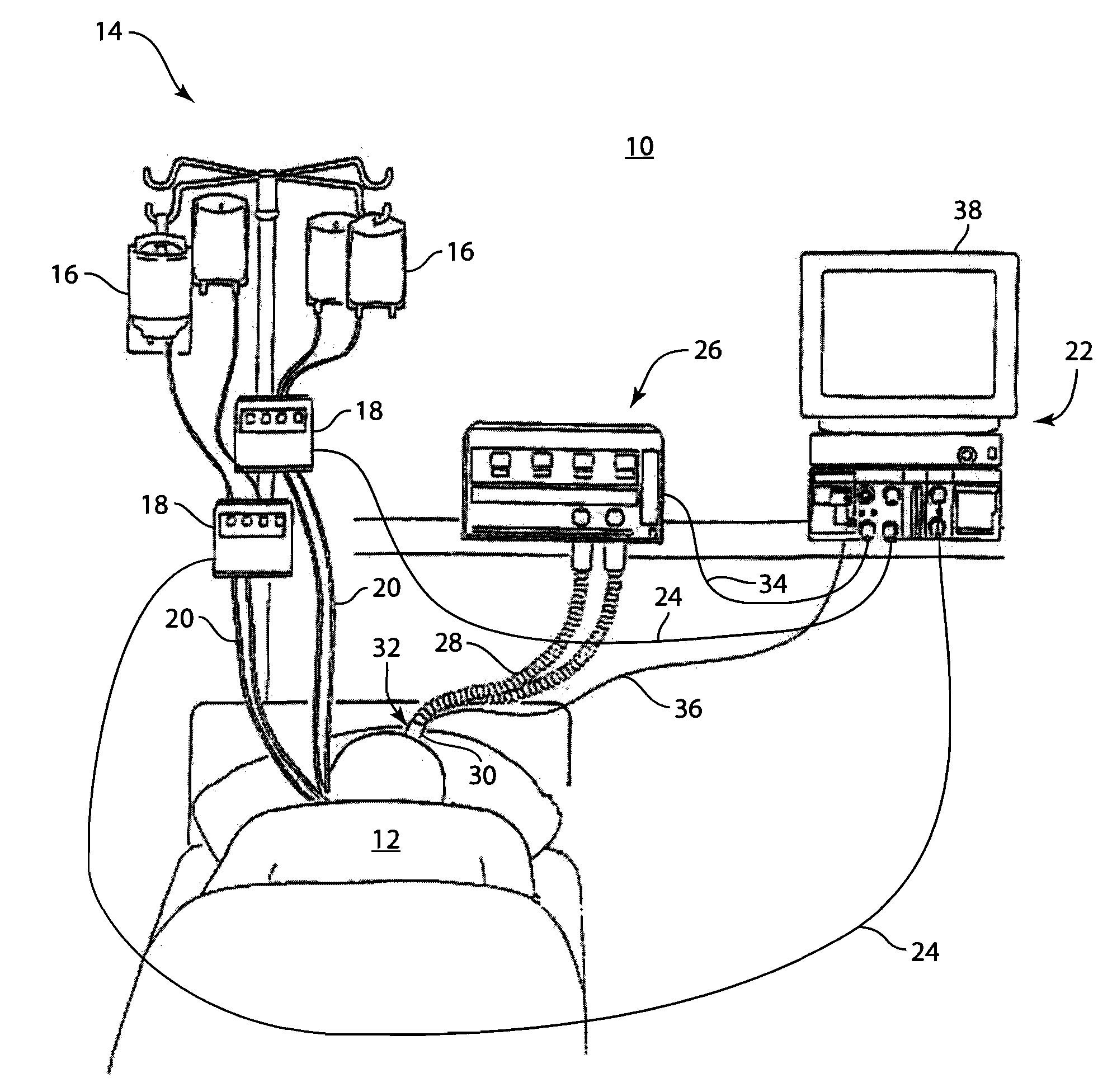System and Method of Modeling the Pharmacodynamic Effect to Drugs Delivered to a Patient
a technology of pharmacodynamic effect and model, applied in the field of drug modeling, can solve the problems of limited communication abilities between each other, incomplete presentation of the condition of the patient to the anesthesiologist, and limited display ability
- Summary
- Abstract
- Description
- Claims
- Application Information
AI Technical Summary
Benefits of technology
Problems solved by technology
Method used
Image
Examples
Embodiment Construction
[0013]FIG. 1 depicts an embodiment of a system 10 for modeling the pharmacodynamic effect of drugs delivered to a patient 12. The embodiment of the system 10 includes an intravenous (IV) drug delivery system 14 that includes one or more bags of a liquid IV drug 16 that are connected to an IV pump 18. The IV pump 18 controls the flow of the IV drug 16 to which it is connected into the patient via a catheter 20. The IV pump 18 not only controls the flow of the IV drug 16, but also monitors the flow of the IV drug 16 such that an IV drug amount may be transmitted to a drug interaction computer 22 via line 24. Alternatively, the IV drug delivery system 14 may be a manual or automated syringe IV drug delivery system, such as is commonly found in operating room settings. The drug interaction computer 22 may be a specific use computer programmed to model drug interactions, or may be a general use computer programmed with computer readable code such as to enable the general use computer to ...
PUM
 Login to View More
Login to View More Abstract
Description
Claims
Application Information
 Login to View More
Login to View More - R&D
- Intellectual Property
- Life Sciences
- Materials
- Tech Scout
- Unparalleled Data Quality
- Higher Quality Content
- 60% Fewer Hallucinations
Browse by: Latest US Patents, China's latest patents, Technical Efficacy Thesaurus, Application Domain, Technology Topic, Popular Technical Reports.
© 2025 PatSnap. All rights reserved.Legal|Privacy policy|Modern Slavery Act Transparency Statement|Sitemap|About US| Contact US: help@patsnap.com



